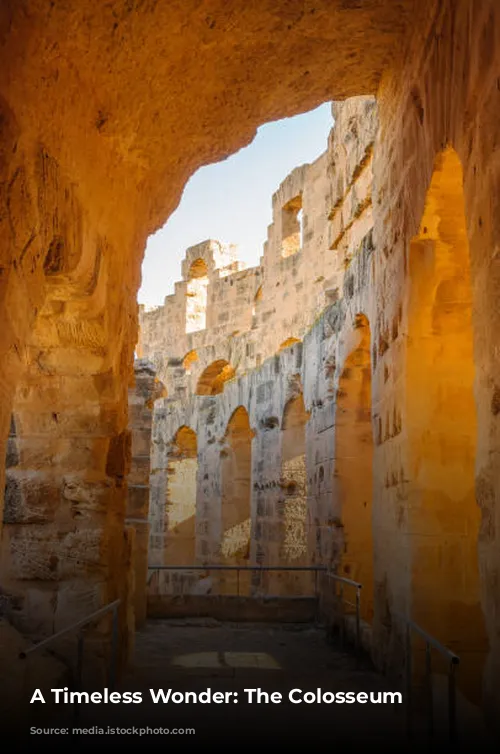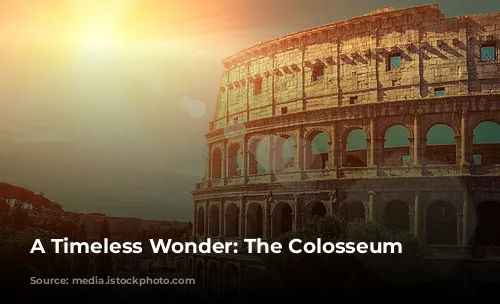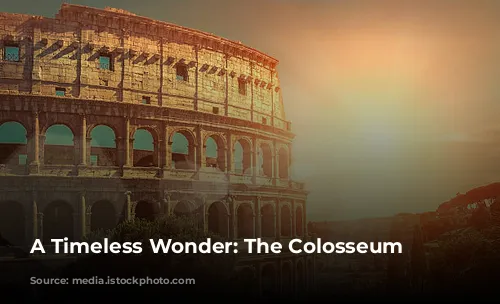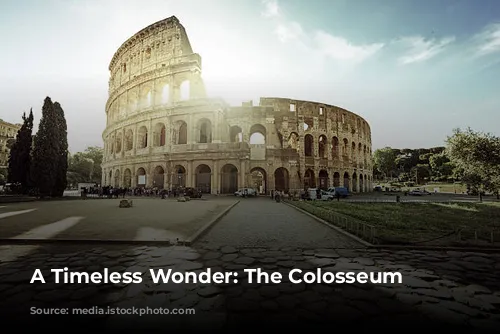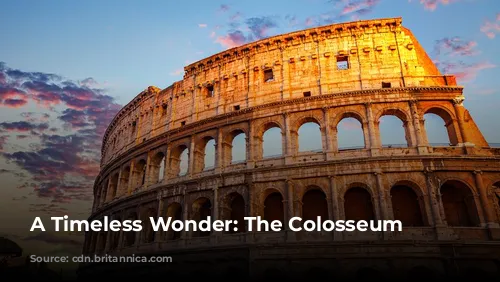The Colosseum stands tall as a testament to the incredible architectural and engineering skills of ancient Rome. It’s not just a historic landmark; it’s a massive source of income for Italy, attracting millions of tourists every year. In 2018 alone, the Colosseum, Roman Forum, and Palatine Hill combined generated over $63.3 million (€53.8 million), making it the most profitable tourist destination in all of Italy.
A Troubled Past
The Colosseum’s journey through time has been far from smooth. Following the fall of the Western Roman Empire, the mighty arena fell into a state of disrepair. In the 12th century, powerful families like the Frangipane and Annibaldi turned it into their fortress, a far cry from its original purpose. The 15th century saw the Colosseum being used as a quarry by Pope Alexander VI, with its valuable materials plundered for construction projects. It was only in the 1990s that the Italian government, after over a millennium of neglect, initiated restoration efforts to restore the Colosseum to its former glory.
Born From Victory
The Colosseum’s construction was driven by the desire to revitalize Rome after a tumultuous period known as the “Year of the Four Emperors” in 69 CE. Emperor Vespasian envisioned it as a grand entertainment venue designed to thrill the Roman public. It would host spectacular events like gladiator fights, animal hunts, and even mock naval battles.
A Monument of Imperial Power
The construction of the Colosseum began under Emperor Vespasian between 70 and 72 CE. His son, Titus, completed the structure and dedicated it in 80 CE. Domitian, Titus’s successor, added the fourth story in 82 CE. It’s interesting to note that the arena was built with the spoils from the sacking of Jerusalem in 70 CE by Titus, and Jewish slaves were forced to work on its construction.
A Giant of Ancient Rome
The Colosseum, also known as the Flavian Amphitheatre, is an impressive elliptical structure built with stone, concrete, and tuff. Standing four stories tall at its highest point, it measures an incredible 620 by 513 feet (189 by 156 meters) and could hold up to 50,000 spectators. The Colosseum was most famously used for gladiatorial combat, where warriors would fight for the entertainment of the masses.
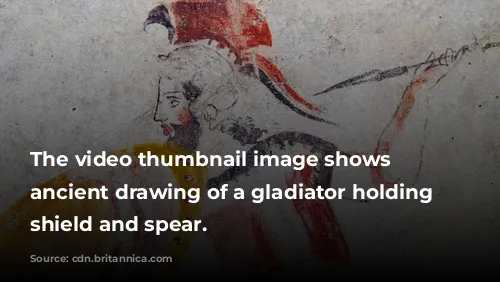
A Symbol of Imperial Ambition
Located just east of the Palatine Hill, the Colosseum was built on the site of Nero’s Golden House, an extravagant palace. The artificial lake that was its centerpiece was drained to make way for the Colosseum, a decision that was symbolic of Vespasian’s desire to replace the tyrannical Nero’s private pleasure with a public spectacle for the people.
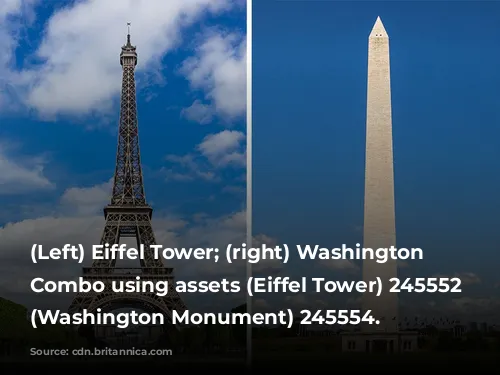
A Masterpiece of Engineering
Unlike earlier amphitheatres, which were often built into hillsides for extra support, the Colosseum stands as a freestanding structure made of stone and concrete. Its complex system of barrel vaults and groin vaults allows it to hold up its immense weight. The three main stories are adorned with arcades and engaged columns in the Doric, Ionic, and Corinthian orders, a design that influenced Renaissance architecture. The Colosseum’s construction materials include travertine, volcanic tufa, and concrete.
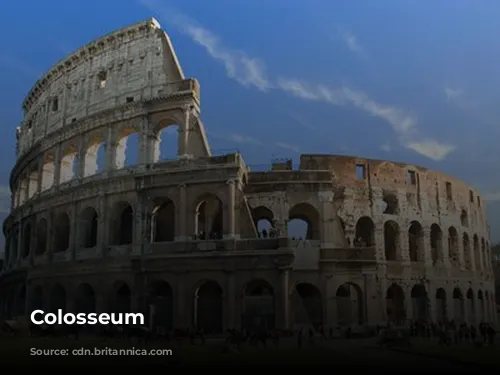
A Spectacle for the Ages
The Colosseum could seat up to 50,000 spectators, who were protected from the sun by a giant retractable awning called the velarium. The velarium was supported by masts extending from the attic story, and hundreds of Roman sailors were responsible for manipulating the rigging. The Colosseum witnessed thousands of gladiatorial contests, animal hunts, and even mock naval battles. However, the claim that early Christians were martyred there is uncertain.
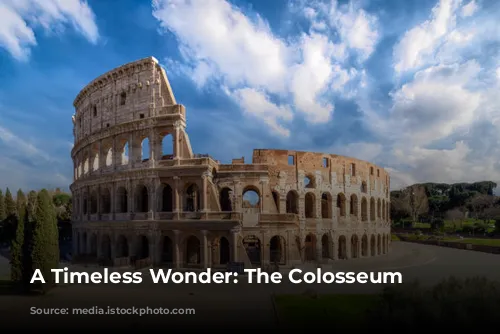
A Legacy of Enduring Appeal
In medieval times, the Colosseum was repurposed as a church, then later as a fortress for the Frangipane and Annibaldi families. Over the centuries, it suffered damage from lightning, earthquakes, vandalism, and pollution. The marble seats and other decorative elements were plundered, leaving the site neglected for over a thousand years. It was only in the 19th century that serious efforts were made to preserve the Colosseum, with notable contributions from Pius VIII. A major restoration project was undertaken in the 1990s, and the Colosseum continues to be one of Rome’s most popular tourist attractions, welcoming millions of visitors each year. Regular exhibitions on ancient Roman culture further enhance the experience for tourists.
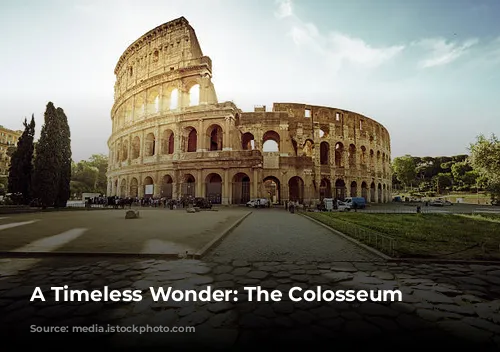
A Timeless Symbol
The Colosseum stands as a reminder of Rome’s grandeur and its enduring legacy. This awe-inspiring structure continues to captivate visitors from around the world, transporting them back to a time of gladiators, emperors, and a civilization that left an indelible mark on history. It remains a potent symbol of Rome’s power, artistry, and the remarkable achievements of ancient engineering.
